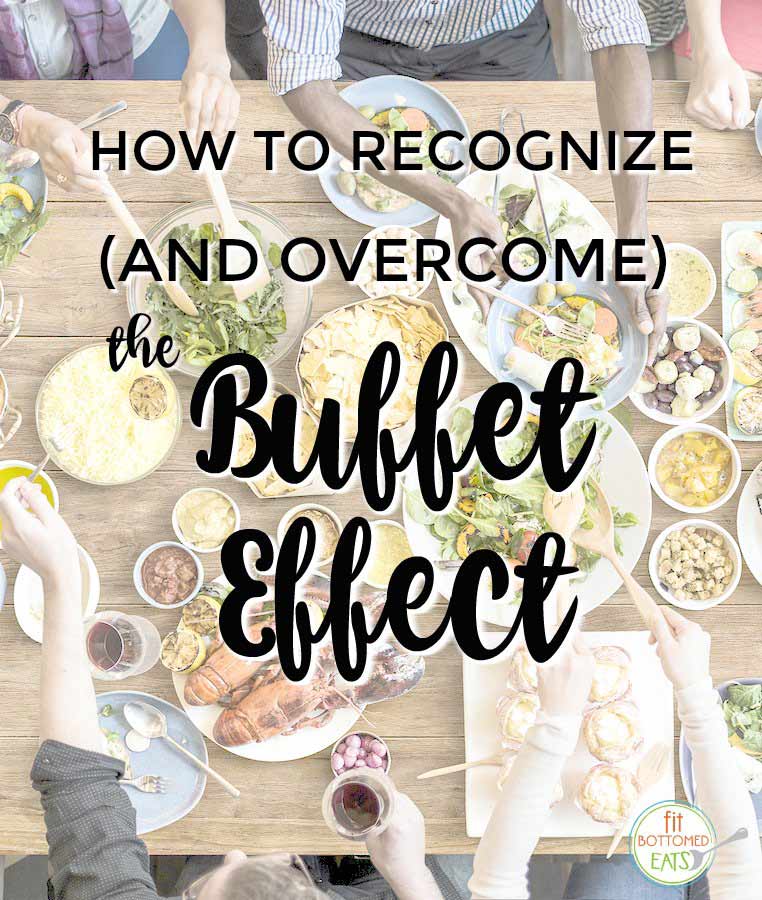Overcoming the Buffet Effect
We’re thrilled to share an excerpt today from the book THE HUNGRY BRAIN: Outsmarting the Instincts That Make Us Overeat, by Stephan J. Guyenet, Ph.D. Stephan looks at the neuroscience behind why we overeat (and how to stop) in a way that’s humorous and seemingly simple, but rooted in real and deep science. Read on — you’re definitely going to learn something today.

The Buffet Effect
“Eat a varied diet” is a maxim that lies at the foundation of our modern approach to health. If we eat a large variety of different foods, we’re likely to meet our overall nutritional needs. While this principle is sound, it also has a dark side: Food variety has a powerful influence on our calorie intake, and the more variety we encounter at a meal, the more we eat.
The effect of food variety on food intake relates to a fundamental property of the nervous system called habituation. Habituation is the simplest form of learning — one shared by all animals with a nervous system. It probably evolved along with the first nervous systems nearly seven hundred million years ago, since it exists in our truly ancient relatives, the jellyfish.
Habituation is one of the key tricks we use to distinguish important events from unimportant noise, and it’s simply this: The more we’re exposed to a stimulus within a short period of time, the less we respond to it. This was demonstrated in a classic series of experiments in human infants. An infant was seated in his mother’s lap, while a screen in front of him intermittently displayed a black-and-white checkerboard pattern. Researchers recorded the amount of time the infant’s gaze remained fixated on the pattern each time it appeared. As any parent might have guessed, the infants paid a lot of attention to the pattern at first and then spent less time fixating on it with each exposure.
When a stimulus is new, we tend to be very interested in it because it might be important. Once we’ve seen it many times in a short period of time, it’s less likely to be important, and we stop paying attention.
As it turns out, this habituation process operates each time we sit down to a meal.
In a pioneering 1981 study by Barbara Rolls and colleagues, volunteers rated the palatability of eight different foods by tasting a small amount of each, and then were provided one of the foods for lunch. After lunch, they once again rated the palatability of the same eight foods by tasting them. Rolls found that the palatability rating of the food the volunteers had eaten for lunch decreased much more than the palatability rating of the other seven foods they hadn’t eaten. When the volunteers were presented with an unexpected second course containing all eight foods, they tended to eat less of the food they had just eaten for lunch.
This shows that we can eat our fill of a specific food and feel totally satisfied, but that doesn’t mean we won’t eat other foods if they’re available. Rolls called this phenomenon sensory-specific satiety. Satiety is the sensation of fullness we get after we eat food, and sensory-specific means this fullness only applies to foods that have similar sensory properties (sweet, salty, sour, fatty) to the ones we just ate.

Beating the Buffet Effect
The fact that sensory-specific satiety drives us to overeat immediately suggests a solution to the problem: Limit yourself to a few foods. If you find yourself at a buffet, tapas restaurant, or similar situation in which high food variety may cause you to overeat, simply choose three items you think would make a satisfying meal, and stick to them. You’ll probably feel just as full on fewer calories.
Several independent researchers using various methods have confirmed that we tend to eat more total food — and gain weight — when we’re presented with a large variety of foods. This goes a long way toward explaining what researchers call the buffet effect.
We tend to overeat spectacularly at buffets, despite the fact that the food isn’t always the crème de la crème. At a buffet, we don’t have the opportunity to habituate to any particular food, because every few bites, we’re eating something new. The brain’s satiety system eventually throws the emergency brake, but not before we’ve eaten far too much.
Sensory-specific satiety also helps explain why we’re happy to eat dessert even after a large meal. We’re no longer hungry for savory food at all, yet when the dessert menu appears, we suddenly grow a “second stomach.” We’re satiated of savory foods, but we aren’t satiated of sweets. A novel sensory stimulus with an extremely high reward value makes it easy to pack away an additional 200 calories of dessert. So it makes sense that the converse is also true, as we saw with the potato diet: When food reward and variety decrease, so does food intake.
Have you noticed the buffet effect in your own life? —Stephan J. Guyenet
Excerpted from THE HUNGRY BRAIN: Outsmarting the Instincts That Make Us Overeat. Copyright © 2017 by Stephan J. Guyenet, Ph.D. Excerpted by permission of Flatiron Books, a division of Macmillan Publishers. No part of this excerpt may be reproduced or reprinted without permission in writing from the publisher.
